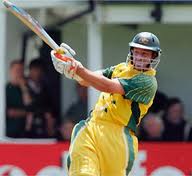By Vikram Afzulpurkar
Is an idea a bane unless of course it sounds brilliant first up? How will Indian cricket prepare for the future?
Indian cricket seems to have entered a new mature era. Foresight. Their top test cricketers are now regularly rested so they can play heady series like Down Under and whichever else the Board deems necessary. Sachin Tendulkar, Rahul Dravid and the veterans, including trump card Dhoni look fresher when they head out.
When MS Dhoni captained India to their 2007 T20 World Cup win in South Africa and topped the following year with establishing India in the top three rankings in most forms of cricket, India breathed easy and was delighted. The team also looked balanced and even had legends like Dravid, Tendulkar, Sehwag, the pace bowling though fast-medium at best, was looking composed with RP Singh as the new strike bowler and veteran Zaheer Khan.
Some pundits however warned that that was the time to shred the old Indian laxative mentality which in bygone eras had assumed 'The team has arrived.' It historically led to a take-it-easy philosophy in terms of what to do with Indian cricket planning. Wise people opined that Indian needed to focus on succession planning, even if 'stick with the best while they last' was a trend that would continue. If a new crescendo had been reached because of the talismanic qualities of skipper Dhoni, even a new skipper had to be groomed about four years since that period.
That wisdom would now ring true. Welcome to a new era in Indian cricket, the age of the outspoken cricketer. Even at what can be considered a mid-career-phase for arguably India's best ever captain, Dhoni has said he is not sure of playing the next world cup in 2015 and would decide by 2013. He's stuck to his guns in the sense that when casually asked two years ago when "if at all" he would consider retirement, he said "Definitely before Sachin Tendulkar." It was of course his testimony to Tendulkar's undying passion but had a ring of trueness about his own ambitions.
Purists, then, would typically be shocked to hear that the most valuable player in a team who made his debut 15 years after another player would actually consider retirement before him. But the shock is less. People have realised that cricketers have ambitions of their own, commitments to family and interests outside cricket. Yet, the statistic is though procative.
Well, with the modern-day lessons learned that time passes too fast and the tiring nature of Indian cricket exhausts cricketers faster, the BCCI too has decided it will form a pool of fast bowlers all ready to play at a ‘telephone call.’ As opposed to nurturing the chosen few who represent the country currently and 'grooming’ youngsters. Indeed, the volume of cricket played by Indians is alarming and these solutions should actually be applied to even regular batsmen, spin bowlers and even wicket keepers. Surely, Parthiv Patel figuring regularly in Indian teams is an indication that administrators are wary of their main gloveman missing out because of injury.
Anyway, coming back to things more pleasing to the eye, what better treat than to have our famed trio of Tendulkar, Dravid and Laxman playing on for another three years in Tests? So, what’s the solution to see that happen, considering that age nowadays is only a number? Play them only in series identified as crucial or iconic. It does not mean necessarily play them in an England series in England just because it's the home of cricket. Australia, a destination with unique challenges, South Africa a hard-as-nails nation in cricket and a Pakistan series are the must-have selectives to prolong careers of these warriors.
Just picture the scenario that we build an India team without these three playing against New Zealand, Sri Lanka, the West Indies and others. Suddenly, we have them for crucial series in tough conditions. Does that not add an X factor, a potent item for a series win? Therefore, we have the resources and abilities to build purely a rotational team. Well, almost rotational.
 |
| John Buchanan |
We are usually ready to accept that the pressure on Dhoni is more because he has to be the captain, the thinker; Remember, how his batting style changed after he became skipper, from being of gay abandon to that of a cautious, late-firing type?
So, why can’t we accept that when a player does not have to be the thinker in say, keeping tabs on the batting order, his own batting may flower. This would be possible in the experimentative scenario of multiple captains. But change is too strong an idea for us to accept, huh?
Careful India, the future is here already. Will you make the mistake of idea rejection?













